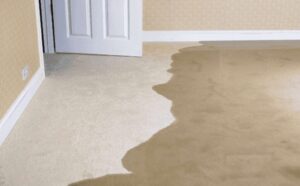▷5 Key Signs of a Slab Leak: A Homeowner’s Guide In San Diego
5 Key Signs of a Slab Leak: A Homeowner’s Guide In San Diego
Discover five essential tips to effectively repair slab leaks and safeguard your property from potential water damage. By implementing these expert strategies, you can address slab leaks promptly and prevent costly repairs down the line. Learn how to identify warning signs early, choose the right professionals for the job, and take proactive measures to mitigate future risks. Don’t let slab leaks wreak havoc on your home or business – empower yourself with the knowledge to tackle them head-on.
Recognizing Slab Leaks
Warning Signs
Slab leaks can go unnoticed for a long time, causing significant damage. Key signs include sudden spikes in water bills, damp carpets, and the sound of running water when pipes are not in use. Keep an eye out for mold or mildew growth, as they indicate hidden moisture.
Testing for Leaks
To confirm a slab leak, turn off all water sources and monitor the water meter. If it continues to move, there might be a leak. Another method involves using specialized equipment like acoustic devices to detect the exact location of the leak without invasive measures.
Causes of Leaks
Common causes of slab leaks include corrosion due to old pipes, shifting soil putting pressure on pipes, and abrasion from gravel or debris. Tree roots intruding into pipes can also lead to leaks. It’s crucial to address these issues promptly to prevent extensive damage and costly repairs.
Importance of Timely Repair
Preventing Damage
Slab leaks, if left unattended, can lead to severe damage within a property. Water seepage can weaken the foundation, causing cracks in walls and floors. Over time, this can compromise the structural integrity of the building. To prevent such damage, it is crucial to address slab leaks promptly.
Taking swift action to repair slab leaks can prevent mold growth. Moisture from leaks creates a conducive environment for mold to thrive, posing health risks to occupants. By fixing the leaks promptly, you can avoid costly mold remediation procedures and safeguard the well-being of those residing in the property.
Saving Costs
Timely repair of slab leaks can help save significant costs in the long run. Ignoring leaks may result in extensive damage that requires expensive repairs. By addressing the issue promptly, you can prevent further deterioration of the property’s structure, thus avoiding hefty repair bills.
Repairing slab leaks promptly also helps conserve water, preventing wastage and reducing utility bills. Water loss due to leaks can add up over time, leading to inflated water bills. By fixing leaks promptly, you not only save on repair costs but also contribute to water conservation efforts.
Repair Methods Overview
Trenchless Solutions
Trenchless solutions for slab leak repair involve minimal excavation, making them less disruptive and cost-effective. This method uses advanced technology to detect and fix leaks without extensive digging. By utilizing epoxy pipe lining or pipe bursting, trenchless solutions ensure a quicker repair process.
Pros:
- Minimal disruption to landscaping
- Cost-effective in the long run
Cons:
- Limited applicability based on the severity of the leak
Re-Piping
Re-piping is a traditional yet effective method for repairing slab leaks by replacing damaged pipes entirely. This approach involves removing the existing pipes and installing new ones, ensuring a long-term solution to prevent future leaks. While re-piping may be more invasive, it guarantees a durable fix for severe leaks.
Key Information:
- Requires access to all affected areas
- Suitable for extensive damage to existing pipes
Tunneling Method
The tunneling method is another conventional approach that involves digging trenches to access and repair slab leaks. This technique allows plumbers to directly reach the damaged pipes for replacement or repair. Although more intrusive compared to trenchless solutions, tunneling provides a comprehensive fix for complex or hard-to-reach leaks.
Examples:
- Excavating the affected area
- Replacing the damaged pipes
Detailed Repair Tips
Accessing the Leak
To access a slab leak, start by locating the leak’s general area using a listening device. Then, pinpoint the exact spot by checking for warm spots on the floor.
Consider cutting into the concrete to reach the leaking pipe. Use caution and precision to avoid damaging surrounding pipes or structures.
Professional Inspection
Seek professional help if you lack experience or tools for detecting and repairing slab leaks. Professionals use specialized equipment like electronic amplification equipment to locate hidden leaks.
Professionals can provide an accurate diagnosis and recommend the most suitable repair method based on the leak’s severity and location.
Choosing the Right Method
When choosing a repair method, consider factors such as the location of the leak, its severity, and your budget constraints.
Options may include repiping, pipe rerouting, or epoxy pipe coating. Each method has its pros and cons, so consult with professionals to determine the best solution for your specific situation.
Preventing Future Leaks
Regular Maintenance
Perform regular maintenance on your plumbing system to prevent future slab leaks. Inspect pipes annually for signs of corrosion or damage. Replace any deteriorating pipes immediately to avoid potential leaks.
Keep an eye out for water pressure issues, as high water pressure can strain your pipes and lead to leaks. Consider installing a pressure regulator to maintain optimal levels and protect your plumbing system.
Early Detection Tips
Monitor your water bill for any sudden spikes, as this could indicate a hidden leak in your slab. Conduct routine checks for damp spots or mold near the foundation, which may signal an underlying leak.
Regularly inspect your walls and floors for cracks or buckling, as these can be signs of a slab leak. If you notice any of these warning signs, contact a professional plumber immediately to assess the situation.
FAQs
What Are The Common Signs Of Slab Leaks?
Slab leaks can be identified by water pooling on floors, sudden spikes in water bills, damp or warm spots on the floor, mold growth, and low water pressure. If you notice any of these signs, it’s crucial to address the issue promptly.
How Important Is Timely Repair Of Slab Leaks?
Timely repair of slab leaks is crucial to prevent extensive damage to your property’s foundation and avoid costly repairs in the future. Ignoring slab leaks can lead to structural issues, mold growth, and increased water bills.
What Are The Common Methods Used To Repair Slab Leaks?
Common methods for repairing slab leaks include spot repair, rerouting pipes, pipe coating, and epoxy restoration. The most suitable method depends on the location and severity of the leak. A professional assessment will determine the best approach for your specific situation.
What Are Some Detailed Tips For Repairing Slab Leaks Effectively?
Effective slab leak repair involves accurately locating the leak, using proper tools and materials, ensuring thorough inspection post-repair, and monitoring for any recurring issues. Hiring a qualified plumber with experience in slab leak repairs is essential for a successful outcome.
How Can Future Slab Leaks Be Prevented?
To prevent future slab leaks, consider regular plumbing inspections, maintaining consistent water pressure, avoiding harsh chemicals that can corrode pipes, insulating pipes in colder climates, and being mindful of what goes down your drains. These proactive measures can help minimize the risk of future leaks.
In conclusion, you now have a solid understanding of how to identify, repair, and prevent slab leaks in your home. By recognizing the signs early on and acting promptly, you can save yourself from extensive damage and costly repairs. The overview of repair methods and detailed tips provided equip you with the knowledge to tackle slab leaks effectively.
Moving forward, remember that regular maintenance and vigilance are key to preventing future leaks. Implement the tips shared here to safeguard your property and finances from the detrimental effects of slab leaks. Stay proactive and attentive to any warning signs to ensure a leak-free environment in your home.
Conclusion
Give Home Pro Plumbing a call right away to learn more about how our experts can help with leak detection in San Diego, CA.
Our Plumbing & Leak Detection Services
Related Posts

▷5 Benefits of Hydro Jet Plumbing: A Comprehensive Guide In San Diego
5 Benefits of Hydro Jet Plumbing: A Comprehensive Guide In San Diego Hydrojet plumbing is a…

▷Essential Tips for Installing a Heat Pump Water Heater In San Diego
Essential Tips for Installing a Heat Pump Water Heater In San Diego Did you know that…

